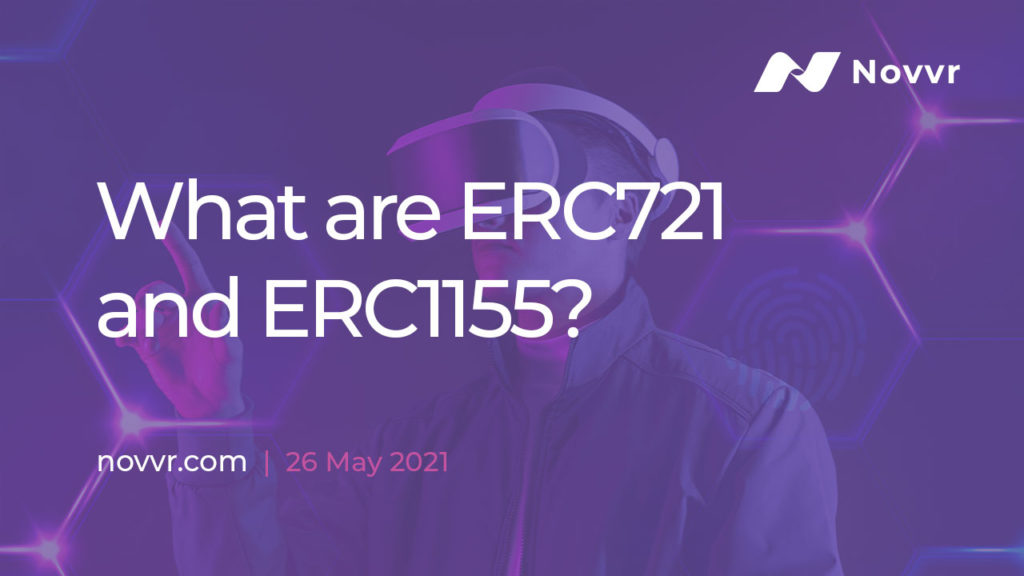What are ERC-721 & ERC-1155?

Non-fungible tokens (NFTs) have gained popularity in the gaming and collectible space and are being used in a wide variety of sectors, from art to music, fashion, and more. The blockchain gaming industry has made significant strides with the development of the Ethereum-based ERC721 standard, which is limited to only non-fungibles, and is used by pioneer games like Cryptokitties.
Let’s understand what is ERC721 & ERC115
To progress and improve the standard of blockchain gaming, Enjin has created a new and approved Ethereum token standard, ERC1155, which allows for both fungibles and non-fungibles. ERC1155 tokens allow new concepts like semi-fungible tokens, where fungible tokens can be “transmuted” into non-fungibles or vice-versa. ERC1155 also supports batch transfers of many token IDs in a single transaction, making it faster and more efficient than ERC721.
ERC 721:
ERC721 requires a new smart contract to be deployed for each new type of token, whereas ERC1155 can be deployed in a single smart contract for infinite token types. ERC1155 tokens cannot be accidentally locked in a contract that doesn’t support ERC1155, which prevents accidental token loss.
ERC1155:
Sending an ERC1155 token to a smart contract can trigger a chain of functions and events on the blockchain, making it 100% reliable because of the strict “onERC1155Received” rules that these tokens follow. In contrast, dapps cannot rely on the ERC721 receiver functions behaving as intended, as they are unreliable.
ERC1155 also supports localization of languages for all metadata, making all tokens universal. It defers all metadata to a URI which can be on the web or IPFS. Additionally, ERC1155 contracts can point to an infinite number of token URIs without storing any additional data on-chain, making it more efficient than ERC721.
ERC1155 includes standardized events for mints, burns, transfers, approvals, and metadata changes, which permits cool ecosystem benefits like deep data analytics on tokens and rich token explorers, unlike ERC721 which only emits transfers and approvals.
Fungibles & Non-Fungibles
ERC-721: Limited to only Non-Fungibles
ERC-1155: Allows both Fungibles and Non-Fungibles
ERC-1155: Allows new concepts like semi-fungible tokens. For example, fungible tokens could be “transmuted” into non-fungibles or vice-versa.
Batch transfers
ERC-721: Supports transferring one token at a time
ERC-1155: Supports batch transfers of many token IDs in a single transaction.
(Since each Ethereum transaction takes around 15-30 seconds, ERC-721 takes a long time to transfer many tokens, while ERC-1155 can send hundreds of different tokens in a single block.
Certain optimized implementations of ERC-1155 have been tested for transfers of up to 150-200 tokens per second!)
Single smart contract, no data waste
ERC-721: Requires a new smart contract deployed for each new type of token (for example, a contract for CryptoKitties, another contract for CryptoCuties, etc)
ERC-1155: Can be deployed in a single smart contract for infinite token types.
*ERC-1155 tokens cannot be accidentally locked in a contract that doesn’t support ERC-1155.
You can only send tokens to an ERC-1155 capable contract! This prevents accidental token loss – your tokens are reverted immediately if the recipient doesn’t support ERC-1155.
ERC-721 tried achieving this but it ended up being useless, because they included legacy “non-safe” functions in the standard. If a wallet uses the non-safe transfer method, your tokens could be permanently lost.
Trigger smart contracts by sending a token
Sending an ERC-1155 token to a smart contract can trigger a chain of functions and events on the blockchain. For example, an exchange (DEX) could allow users to directly send tokens and the exchange to another token would be done atomically, instantly, on-chain.
This is 100% reliable with ERC-1155 because of the strict “onERC1155Received” rules that these tokens follow.
You cannot rely on ERC-721 tokens being sent using this method, because it supports non-safe transfers. If the wallet sends the token to that exchange using a non-safe transfer, it will be lost to the user.
This means that dapps cannot rely on the ERC-721 receiver functions behaving as intended. These apps won’t be created, since they’re unreliable with ERC-721.
Localization
ERC-721: Support only 1 language
ERC-1155: Supports localization of languages for all metadata, such as the token name, description, or even the token image. This makes all tokens universal.
Legacy metadata
ERC-721: Contains legacy metadata like “symbol” and “name” which is not necessary for many modern tokens
ERC-1155: Defers all metadata to a URI which can be on the web or IPFS
ID Substitution
ERC-721: Supports only static metadata, so each token ID must have its metadata URI stored or managed by the smart contract.
ERC-1155: Contracts can point to an infinite number of token URIs without storing any additional data on-chain. This can even be used to point to a web service that hosts dynamically generated token JSON for each token in a database.
Rich Event Logs
ERC-721: Emits transfers and approvals.
ERC-1155: Includes standardized events for mints, burns, transfers, approvals, and metadata changes. This permits cool ecosystem benefits like deep data analytics on tokens and rich token explorers.
Conclusion:
In conclusion, while ERC721 was a significant step forward in the development of non-fungible tokens, the ERC1155 standard has addressed many of its limitations, making it more versatile, efficient, and secure for web3 development.